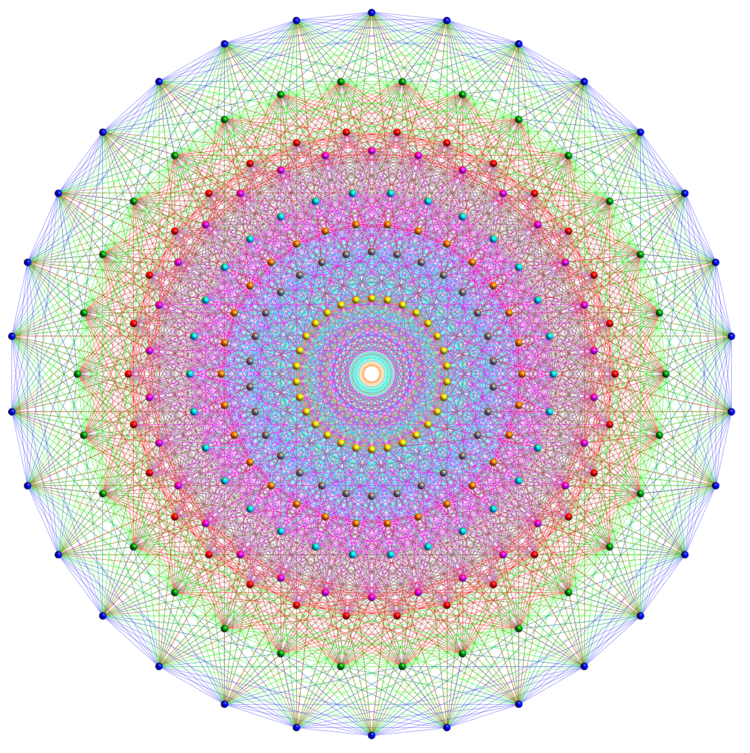 | ||
Towards the end of the nineteenth century, Sophus Lie introduced the notion of Lie group in order to study the solutions of ordinary differential equations (ODEs). He showed the following main property: the order of an ordinary differential equation can be reduced by one if it is invariant under one-parameter Lie group of point transformations. This observation unified and extended the available integration techniques. Lie devoted the remainder of his mathematical career to developing these continuous groups that have now an impact on many areas of mathematically based sciences. The applications of Lie groups to differential systems were mainly established by Lie and Emmy Noether, and then advocated by Élie Cartan.
Contents
- Types of symmetries
- Applications
- Infinitesimal approach
- Lie groups and Lie algebras of infinitesimal generators
- Continuous dynamical systems
- Invariants
- Definition of Lie point symmetries
- Lie point symmetries of algebraic systems
- Algebraic systems
- Example
- Lie point symmetries of dynamical systems
- Systems of ODEs and associated infinitesimal generators
- Software
- References
Roughly speaking, a Lie point symmetry of a system is a local group of transformations that maps every solution of the system to another solution of the same system. In other words, it maps the solution set of the system to itself. Elementary examples of Lie groups are translations, rotations and scalings.
The Lie symmetry theory is a well-known subject. In it are discussed continuous symmetries opposed to, for example, discrete symmetries. The literature for this theory can be found, among other places, in these notes.
Types of symmetries
Lie groups and hence their infinitesimal generators can be naturally "extended" to act on the space of independent variables, state variables (dependent variables) and derivatives of the state variables up to any finite order. There are many other kinds of symmetries. For example, contact transformations let coefficients of the transformations infinitesimal generator depend also on first derivatives of the coordinates. Lie-Bäcklund transformations let them involve derivatives up to an arbitrary order. The possibility of the existence of such symmetries was recognized by Noether. For Lie point symmetries, the coefficients of the infinitesimal generators depend only on coordinates, denoted by
Applications
Lie symmetries were introduced by Lie in order to solve ordinary differential equations. Another application of symmetry methods is to reduce systems of differential equations, finding equivalent systems of differential equations of simpler form. This is called reduction. In the literature, one can find the classical reduction process, and the moving frame-based reduction process. Also symmetry groups can be used for classifying different symmetry classes of solutions.
Infinitesimal approach
Lie's fundamental theorems underline that Lie groups can be characterized by their infinitesimal generators. These mathematical objects form a Lie algebra of infinitesimal generators. Deduced "infinitesimal symmetry conditions" (defining equations of the symmetry group) can be explicitly solved in order to find the closed form of symmetry groups, and thus the associated infinitesimal generators.
Let
In the canonical basis of elementary derivations
where
Lie groups and Lie algebras of infinitesimal generators
Lie algebras can be generated by a generating set of infinitesimal generators. To every Lie group, one can associate a Lie algebra. Roughly, a Lie algebra
Continuous dynamical systems
A dynamical system (or flow) is a one-parameter group action. Let us denote by
such that for all point
A continuous dynamical system is defined on a group
Invariants
An invariant, roughly speaking, is an element that does not change under a transformation.
Definition of Lie point symmetries
In this paragraph, we consider precisely expanded Lie point symmetries i.e. we work in an expanded space meaning that the distinction between independent variable, state variables and parameters are avoided as much as possible.
A symmetry group of a system is a continuous dynamical system defined on a local Lie group
Lie point symmetries of algebraic systems
Let us define algebraic systems used in the forthcoming symmetry definition.
Algebraic systems
Let
An algebraic system defined by
Definition of Lie point symmetries
The following theorem (see th. 2.8 in ch.2 of ) gives necessary and sufficient conditions so that a local Lie group
Theorem. Let
Then
for every infinitesimal generator
Example
Let us consider the algebraic system defined on a space of 6 variables, namely
The infinitesimal generator
is associated to one of the one-parameter symmetry groups. It acts on 4 variables, namely
Lie point symmetries of dynamical systems
Let us define systems of first-order ODEs used in the forthcoming symmetry definition.
Systems of ODEs and associated infinitesimal generators
Let
and the set
One can associate also a continuous dynamical system to a system of ODEs by resolving its equations.
An infinitesimal generator is a derivation that is closely related to systems of ODEs (more precisely to continuous dynamical systems). For the link between a system of ODEs, the associated vector field and the infinitesimal generator, see section 1.3 of. The infinitesimal generator
Definition of Lie point symmetries
Here is a geometrical definition of such symmetries. Let
where
One does not need the explicit formulas of
Example
Consider Pierre François Verhulst's logistic growth model with linear predation, where the state variable
The continuous dynamical system associated to this system of ODEs is:
The independent variable
The infinitesimal generator associated to this system of ODEs is:
The following infinitesimal generators belong to the 2-dimensional symmetry group of
Software
There exist many software packages in this area. For example, the package liesymm of Maple provides some Lie symmetry methods for PDEs. It manipulates integration of determining systems and also differential forms. Despite its success on small systems, its integration capabilities for solving determining systems automatically are limited by complexity issues. The DETools package uses the prolongation of vector fields for searching Lie symmetries of ODEs. Finding Lie symmetries for ODEs, in the general case, may be as complicated as solving the original system.
